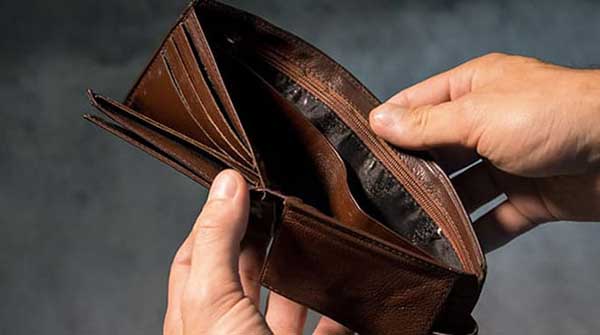Canada’s economic challenges in 2025 include rising debt, slow investment, falling consumption and trade tensions

For interview requests, click here
The start of a new year always invites us to dust off the old crystal ball and try to peer into it to see what the year has in store. Predicting how an economy will perform, however, is always tricky because so many external, uncontrollable factors can throw off even the best forecasts. Weather events and politics are two big ones that can quickly change the game.
Still, the basic pillars that support an economy are well-known and can provide some clues about what’s to come. Consumption, investment, government spending, and foreign trade are the four key components. Understanding their likely trends or directions gives us a good sense of how the year might unfold.
Consumption is the spending we all do on goods and services, from cups of coffee to haircuts. It’s the largest part of an economy like Canada’s and reflects the standard of living it provides. But this year, consumer spending is unlikely to drive growth. Canadians are too concerned about their finances to indulge in “shop ‘til you drop” behaviour. For years, our standard of living has been slowly eroding when adjusted for population growth.
 |
| Recommended |
| How Justin Trudeau failed Canada
|
| Trudeau’s leadership questioned as trade tensions escalate
|
| Trump’s tariff threat could shatter Canada’s economy
|
Even though inflation is no longer as alarming as it was a few years ago, it still lingers in our minds. Prices continue to rise in grocery stores and elsewhere, leaving many feeling the financial pinch. Canadians are budgeting carefully and cutting back wherever they can. Media outlets are packed with advice on how to save, a clear sign that spending restraint will be the norm this year.
Investment, or capital spending by businesses, is also unlikely to revive the economy in 2025. Businesses can find ways to invest in good times and bad, but one thing that always stops them in their tracks is uncertainty. And right now, uncertainty is everywhere. Entrepreneurs are full of questions without answers. Will consumers spend enough to buy their products? Will governments adjust taxes, tariffs, or policies that affect businesses? Can inflation remain under control? Will there be enough skilled workers at affordable wages? What will happen to interest rates?
Even though borrowing costs are falling, which often encourages investment, businesses are hesitant. No one wants to take on more risk until at least some of these uncertainties are resolved.
Government spending could stimulate the economy, but only if it sparks more consumption and private-sector investment. Unfortunately, ongoing deficits and growing debt leave little room for big spending initiatives. Rising debt is already hurting Canada’s credit rating and pushing up the interest we pay on government borrowing. As more tax dollars go toward interest payments, there’s less left for essential services like health care or meaningful economic stimulus. The brief tax holiday over the holiday period had little impact and isn’t expected to move the needle much this year.
Canada’s trade future is another significant unknown, particularly given global uncertainties. In the United States, the incoming president has threatened a barrage of tariffs that, if enacted, could throw the global economy into chaos. While it’s unlikely all these threats will materialize, even a partial rollout could dampen international trade and hurt economies everywhere, including Canada. Historically, tariffs have been as damaging to the imposing country as to its trading partners, but the possibility of trade restrictions is already fuelling anxiety.
One silver lining in this otherwise cloudy forecast is the weakening of the Canadian dollar. A lower dollar makes Canadian exports cheaper and more attractive on the global market, which could boost foreign trade. However, this comes with its own set of challenges. Importing goods becomes more expensive, and travelling abroad feels like a bigger financial stretch. Whether the benefits of increased exports will outweigh these drawbacks depends on how trade barriers and global demand play out.
Don’t expect 2025 to be a standout year for Canada’s economy. Consumer caution, business hesitation, government constraints, and trade uncertainties combine to paint a challenging picture. Still, with a bit of luck, co-operative weather, and sound decisions from governments and policymakers (always a stretch), we might avoid a major downturn. And, as always, there’s hope that 2026 will bring better days.
Dr. Roslyn Kunin is a respected Canadian economist known for her extensive work in economic forecasting, public policy, and labour market analysis. She has held various prominent roles, including serving as the regional director for the federal government’s Department of Employment and Immigration in British Columbia and Yukon and as an adjunct professor at the University of British Columbia. Dr. Kunin is also recognized for her contributions to economic development, particularly in Western Canada.
Explore more on Canadian economy, Cost of living, Business investment, Trade, Federal debt and deficit
Troy Media is committed to empowering Canadian community news outlets by providing independent, insightful analysis and commentary. Our mission is to support local media in building an informed and engaged public by delivering reliable content that strengthens community connections, enriches national conversations, and helps Canadians learn from and understand each other better.
